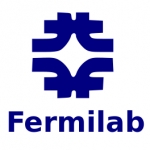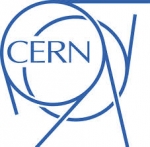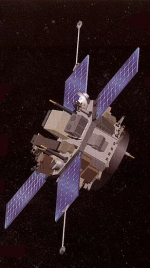Displaying items by tag: particles
Jefferson Laboratory
Thomas Jefferson National Accelerator Facility (Jefferson Lab) is one of 17 national laboratories funded by the U.S. Department of Energy. The lab also receives support from the City of Newport News and the Commonwealth of Virginia.
The lab's primary mission is to conduct basic research of the atom's nucleus using the lab's unique particle accelerator, known as the Continuous Electron Beam Accelerator Facility (CEBAF). Jefferson Lab also conducts a variety of research using its Free-Electron Laser, which is based on the same electron-accelerating technology used in CEBAF.
In addition to its science mission, the lab provides programs designed to help educate the next generation in science and technology, and to engage the public.
Kavli Institute for Particle Astrophysics and Cosmology (KIPAC)
The Kavli Institute for Particle Astrophysics and Cosmology (KIPAC) is an independent laboratory of Stanford University, USA.
It aims to to serve as a bridge between the disciplines of astrophysics, cosmology and particle physics. KIPAC's members work in the Physics and Applied Physics Departments on the Stanford campus and at the SLAC National Accelerator Laboratory. Its mission is to bring the resources of modern computational, experimental, observational and theoretical science to bear on our understanding of the universe at large.
KIPAC was founded in 2003 by a gift by Fred Kavli and The Kavli Foundation. It is housed on the grounds of the Stanford Linear Accelerator Center, as well as on the main Stanford campus.
Fermilab
the Fermi National Accelerator Laboratory (Fermilab), located just outside Batavia, Illinois, near Chicago, is a US Department of Energy national laboratory specializing in high-energy particle physics.
As of January 1, 2007, Fermilab is operated by the Fermi Research Alliance, a joint venture of the University of Chicago, Illinois Institute of Technology and the Universities Research Association (URA). Fermilab is a part of the Illinois Technology and Research Corridor.
Fermilab's Tevatron was a landmark particle accelerator; at 3.9 miles (6.3 km) in circumference, it was the world's second largest energy particle accelerator (CERN's Large Hadron Collider is 27 km in circumference), until being shut down on September 30, 2011. In 1995, both the CDF and DØ (detectors which utilize the Tevatron) experiments announced the discovery of the top quark.
In addition to high energy collider physics, Fermilab is also host to a number of smaller fixed-target and neutrino experiments, such as MiniBooNE (Mini Booster Neutrino Experiment), SciBooNE (SciBar Booster Neutrino Experiment) and MINOS (Main Injector Neutrino Oscillation Search). The MiniBooNE detector is a 40-foot (12 m) diameter sphere which contains 800 tons of mineral oil lined with 1520 individual phototube detectors. An estimated 1 million neutrino events are recorded each year. SciBooNE is the newest neutrino experiment at Fermilab; it sits in the same neutrino beam as MiniBooNE but has fine-grained tracking capabilities. The MINOS experiment uses Fermilab's NuMI (Neutrinos at the Main Injector) beam, which is an intense beam of neutrinos that travels 455 miles (732 km) through the Earth to the Soudan Mine in Minnesota.
TRIUMF
TRIUMF is Canada's national laboratory for particle and nuclear physics.
Its headquarters are located on the south campus of the University of British Columbia in Vancouver, British Columbia. TRIUMF houses the world's largest cyclotron, a source of 500 MeV protons, which was named an IEEE Milestone in 2010.
TRIUMF's activities involve particle physics, nuclear physics, nuclear medicine, and materials science.
CERN
The European Organization for Nuclear Research (CERN) is an international organization whose purpose is to operate the world's largest particle physics laboratory. Established in 1954, the organization is based in the northwest suburbs of Geneva and has 20 European member states.
The term CERN is also used to refer to the laboratory, which employs just under 2,400 full-time employees, 1,500 part-time employees, and hosts some 10,000 visiting scientists and engineers, representing 608 universities and research facilities and 113 nationalities.
CERN's main function is to provide the particle accelerators and other infrastructure needed for high-energy physics research - as a result, numerous experiments have been constructed at CERN following international collaborations. It is also the birthplace of the World Wide Web. The main site at Meyrin has a large computer centre containing powerful data-processing facilities, primarily for experimental-data analysis; because of the need to make these facilities available to researchers elsewhere, it has historically been a major wide area networking hub.
AstroParticle and Cosmology Laboratory - APC
The field of astroparticle physics lies at the interface between the study of the infinitely large and infinitely small, between particle physics and astrophysics.
The AstroParticle and Cosmology laboratory (APC) was designed to bring together the different communities (experimentalists, theorists and observers) involved in this field. It was created in 2005 during the overhaul of the University of Paris 7 on the campus of Paris Rive Gauche with laboratories MPQ (Matériaux et Phénomènes Quantiques) and MSC (Matière et Systèmes Complexes). APC brings together 75 permanent researchers, and over sixty engineers, technicians and administrative staff. Including non permanent staff (PhD students, postdoctoral fellows, visitors), there are some 200 people in this new structure. Besides the University of Paris Diderot, the laboratory funding agencies are CNRS (represented by three of its Institutes: mainly IN2P3, but also INSU and INP), CEA (IRFU) and the Paris Observatory.
ACE (spacecraft)
Advanced Composition Explorer (ACE) is a NASA space exploration mission being conducted as part of the Explorer program to study matter in situ, comprising energetic particles from the solar wind, the interplanetary medium, and other sources. Real-time data from ACE is used by the Space Weather Prediction Center to improve forecasts and warnings of solar storms. The ACE robotic spacecraft was launched August 25, 1997 and is currently operating in a Lissajous orbit close to the L1 Lagrange point (which lies between the Sun and the Earth at a distance of some 1.5 million km from the latter). The spacecraft is still in generally good condition, and has enough fuel to maintain its orbit until 2024. NASA Goddard Space Flight Center managed the development and integration of the ACE spacecraft.
Instrumentation
- Cosmic Ray Isotope Spectrometer (CRIS): CRIS determines the isotope composition of galactic cosmic rays. It is designed to be sensitive enough to detect isotopes up to the range of zinc (Z-30).
- ACE Real Time Solar Wind (RTSW).
- Solar Wind Ion Mass Spectrometer (SWIMS) and Solar Wind Ion Composition Spectrometer (SWICS): These two instruments are time-of-flight mass spectrometers, each tuned for a different set of measurements. They analyze the chemical and isotopic composition of solar wind and interstellar matter.
- Ultra-Low Energy Isotope Spectrometer (ULEIS): ULEIS measures ion flux and is sensitive to a range from helium through nickel to determine the makeup of solar energetic particles and the mechanism by which the particles become charged by the sun.
- Solar Energetic Particle Ionic Charge Analyzer (SEPICA): As of 2008, this instrument is no longer functioning due to failed gas valves.
- Solar Isotope Spectrometer (SIS).
- Solar Wind Electron, Proton and Alpha Monitor (SWEPAM).
- Electron, Proton, and Alpha-particle Monitor (EPAM).
- Magnetometer (MAG).







